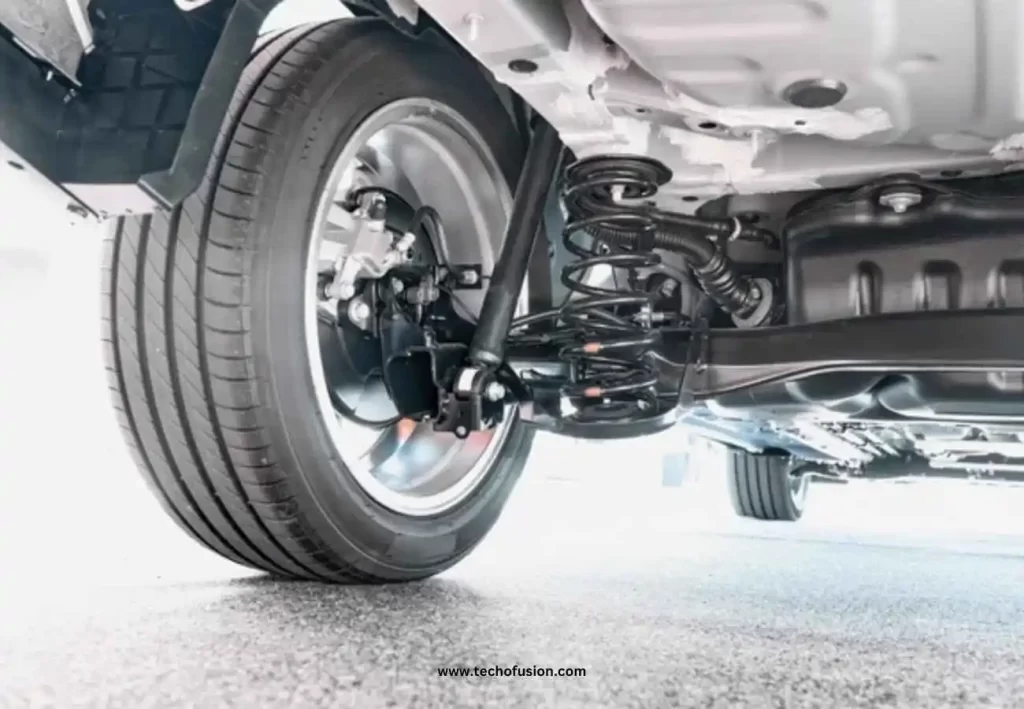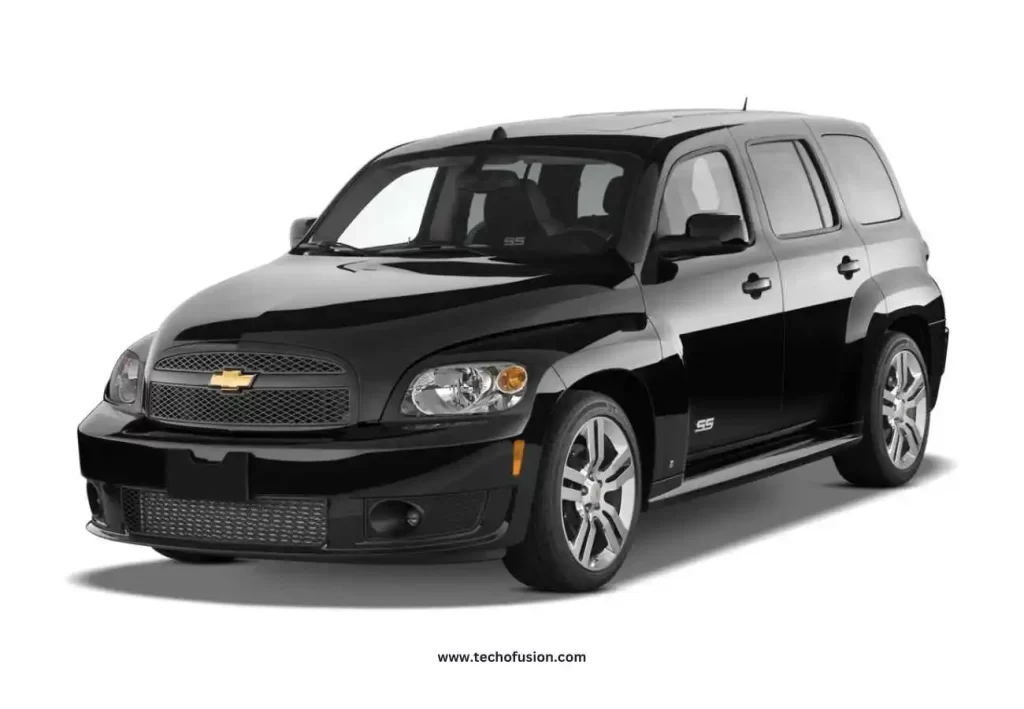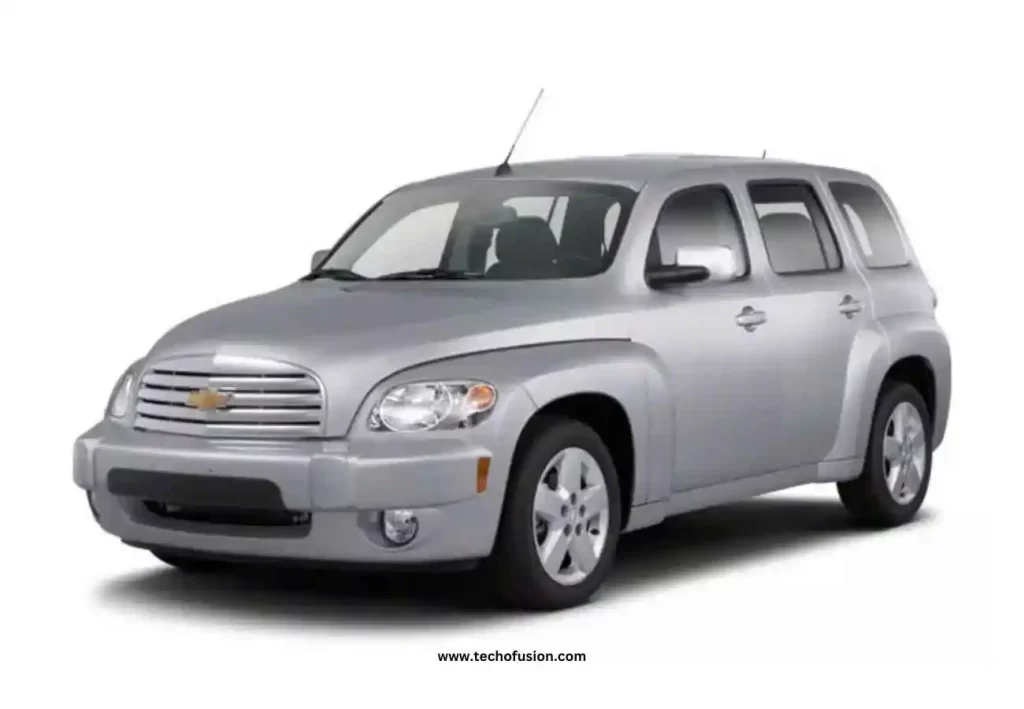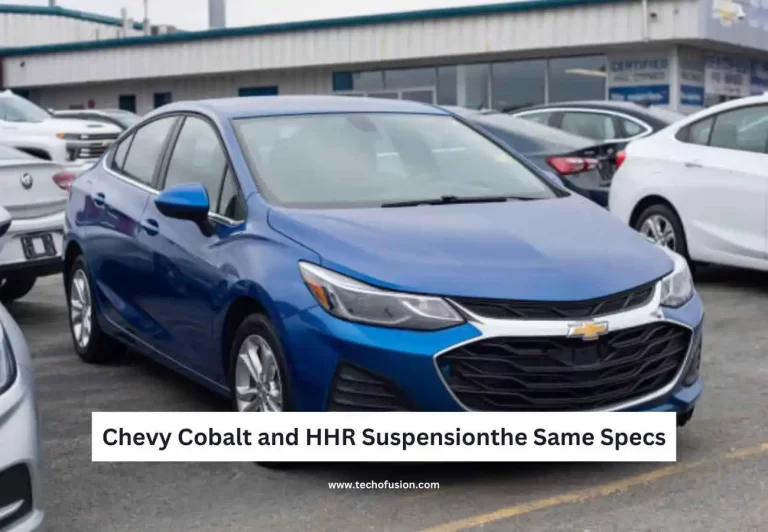When discussing car suspensions, one might wonder if two different models can share similar specifications. This is a common inquiry among Chevrolet lovers, especially for the Chevy Cobalt and HHR suspension systems. Both vehicles have a lot of similarities in their design. The Chevy Cobalt and Chevrolet HHR were designed on the same GM Delta platform in the middle of the 2000s. So it’s not shocking that their suspension spec systems are the same. This article discusses the specs, compatibility, and performance of these two Chvey models’ suspension systems.
Chevy Cobalt and HHR Suspension
To sum up, the Chevy Cobalt and HHR suspension with the same specs may seem quite similar at first glance, thanks to the shared GM Delta platform. Both vehicles feature independent rear suspension systems with MacPherson struts, and their rear suspension systems are similar but not opposite. Control arms and other suspension parts are often variable, but small differences in vehicle designs may affect performance.
For those considering replacing parts between a Cobalt and an HHR, ensuring that the parts are suitable and fitted to the specific model year is essential. Moreover, always remember that while many parts may be interchangeable, the vehicles’ differences in weight and size may influence how the parts perform once installed. Therefore, it’s recommended to verify with a mechanic or refer to official GM part compatibility guides before proceeding with replacements or upgrades.

Delta Platform Shared Foundation
The Chevy Cobalt and HHR were both designed using General Motors’ Delta platform. This platform has been used in many GM vehicles, primarily compact cars. Because of this shared foundation, the Cobalt and HHR have several mechanical similarities. Their system, engine places and suspension designs all benefit from this identical platform.
However, it is important to understand the small difference between the two vehicles. Even though they have a similar base, their suspension systems might not be entirely identical in every aspect. Transitioning from one model to another, car lovers often ask, “Will Chevy Cobalt control ATMs fit an hhr? This query stems from the assumption that parts can easily be flipped between two cars built on the same platform. While the Chevy Cobalt and HHR suspension have the same specs and may sound sensible, it’s vital to understand the specific details.
Control Arms Compatibility Between Cobalt and HHR
Control arms are basic pieces of a vehicle’s suspension system. They connect the vehicle’s frame to its wheels, allowing for smooth and controlled movement. In the case of the Chevy Cobalt and HHR, many believe that their control arms are variable due to the same Delta platform. The control arms on both vehicles are similar, and in many cases, they can be used separately. However, this doesn’t mean that every part is identical. Although most of the parts, including the control arms, are nearly the same, subtle differences in weight distribution and vehicle height may affect their performance.

When you examine their specifications more closely, it becomes evident that some aftermarket parts may claim to fit both models. Yet, the best approach for any replacement is to ensure that the part is explicitly listed as compatible with the vehicle. So, while it might seem that the Chevy Cobalt and HHR suspension have the same specs, variations in control arms’ dimensions could exist depending on the year and model.
Comparison of Chevy Cobalt and HHR
The HHR and Chevrolet Cobalt have flexible front suspension systems. The flexible front suspension improves the vehicle’s ride quality, handling, and overall comfort. Specifically, both models have MacPherson struts in the front, which is a common suspension design in many small vehicles. The front suspension of the Cobalt is slightly different from the HHR. While the Cobalt features a torsion beam back suspension, the HHR requires a partially independent back suspension. This means that while they may appear to have similar suspension specs, there are some small differences between the two models.
| Feature | Chevy Cobalt | Chevy HHR |
| Platform | GM Delta platform | GM Delta platform |
| Front Suspension | MacPherson Strut | MacPherson Strut |
| Rear Suspension | Torsion Beam | Torsion Beam |
| Ride Height | Lower, sportier stance | Higher, cushioned ride |
| Ride Quality | Stiffer, sportier handling | Softer, more comfort oriented |
| Weight Capacity | Lighter, designed for compact car weight | Heavier, designed for wagon/crossover weight |
| Trim-Level Suspension Tuning | Sportier (e.g., Cobalt SS) | Tuned for comfort (e.g., HHR SS) |

Suspension Component Compatibility
Swapping suspension components between the Chevy Cobalt and HHR can influence performance due to their differing weights. The HHR is slightly heavier than the Cobalt, primarily because of its larger body and additional features. While both vehicles share similar suspension components, the extra weight of the HHR may necessitate sturdier parts to ensure optimal performance. Although it is possible to cobalt control ATMs fit an hhr, the handling characteristics may differ slightly. It is advisable to consult a professional mechanic before making such modifications to ensure safety and compatibility.
Aftermarket Suspension updates
When considering updates or replacements for suspension parts, many aftermarket options are available for both vehicles. These parts are often designed to improve performance, making them appealing to vehicle lovers looking for increased stability and performance. However, it is essential to choose products specifically designed for either the Cobalt or HHR to avoid compromising safety or performance. The phrase “Chevy Cobalt and HHR suspension the same specs” can be misleading; even minor differences in weight or size can significantly impact how the vehicles perform. Always research thoroughly and consult with professionals when selecting aftermarket parts.
What to Consider When Choosing Replacement Parts
When replacing suspension parts, for example, control arms, or struts, it’s important to consider the important characteristics of every vehicle. For instance, the Chevy Cobalt and HHR suspension with the same specs might be almost the same. Some parts may break out differently due to the vehicles’ weight distribution and intended usage. The HHR, being a larger vehicle, may experience more wear and tear on certain suspension parts. Similarly, if you’re considering updating the suspension for high performance, selecting parts that match the vehicle’s intended use is essential.
Both vehicles can benefit from aftermarket suspension components designed for improved handling and comfort. Whether you drive an HHR or a Chevy Cobalt, enhancing the suspension can have an important impact on ride quality. When choosing replacement parts, make sure you use parts that have been validated for compatibility with your vehicle.
Conclusion
In conclusion, although the chevy cobalt and hhr suspension the same specs seem similar, they are not entirely identical. Differences in vehicle size, weight, and design lead to little variety in performance and similarity, especially in suspension parts like control arms. By understanding these subtleties, vehicle owners can make informed choices while updating their vehicle’s suspension system. Are cobalt and hhr suspension the same? the most raised question is this.
FAQ’s
What does the HHR stand for in Chevy HHR?
HHR stands for Heritage High Roof in the Chevy HHR. It refers to the vehicle’s retro style, which was meant to resemble classic 1940s cars.
What vehicle is similar to an HHR?
The Chrysler PT Cruiser car is similar to the Chevy HHR vehicle. Both vehicles feature retro styling and compact crossover designs, sharing a similar market niche.
What is the difference between HR and HHR?
HR generally stands for Human Resources, which manages employee relations. HHR in the automotive world refers to Heritage High Roof, a model name for the retro-styled Chevy HHR vehicle.
Is the Chevy Cobalt rear wheel drive?
No, the Chevy Cobalt is not rear-wheel drive it is a front-wheel drive layout, which is common in compact cars for better traction and fuel efficiency.


